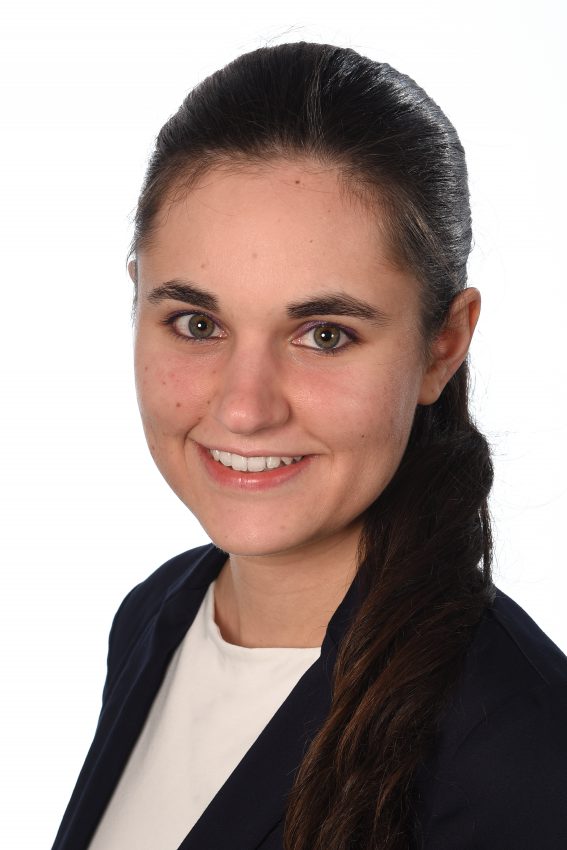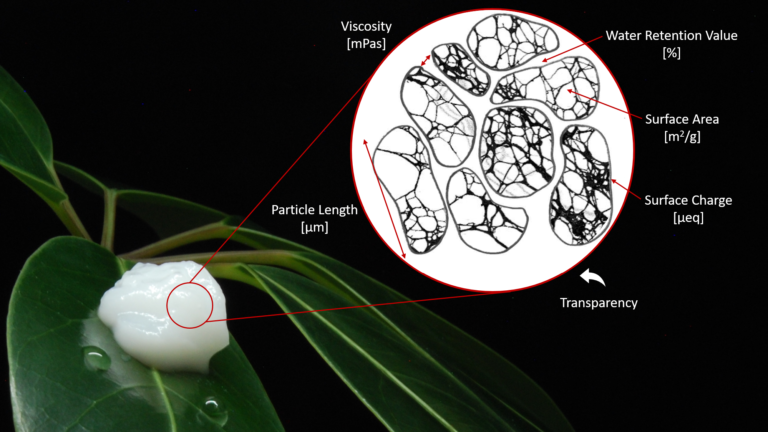
Nadine Peneder
MFC Application Engineer
Being able to characterize microfibrillated cellulose is not only essential for understanding the material but also to guarantee a reproducible and constant product quality.
At the moment, there are no standardized methods available (the ISO working group TC6/TG1 has not published any norms yet) and therefore a lot of different characterizations, some more useful than others, can be found in literature.
The difficulty in characterizing microfibrillated cellulose is its unique structure. The material does not primarily consist of single fibrils where fibril length and width may be measured but mostly of microparticles with a fine network substructure (see Fig. 1).

Fig. 1: Structure of microfibrillated cellulose
At Weidmann Fiber Technology we have focused on developing quick, automated characterization methods that allow us on one hand to control our production process in detail and on the other hand measure the parameters that play an important role in applications and give value to the customer.
We have split our measurement parameters into two categories: primary and secondary quality criteria. Primary quality criteria comprise of properties that can be tuned during the production process and are not influenced by other parameters while secondary quality criteria are parameters that depend on primary quality criteria but are often easier to measure and more important in the applications.
Primary Quality Criteria
To measure the size of the microparticles we rely on a pulsed laser based image analysis. In comparison to standard image analyses that only measure 20% of the particles present in the material, the pulsed laser technology increases the resolution and characterizes the particle size distribution in much more detail.
A typical parameter to describe the morphology is the particle length, D50 where 50 % of the measured particles have a length smaller than this value. However, other parameters like aspect ratio and thickness can be determined as well.
Characterizing the network substructure is much more difficult. Electron microscopy (SEM and TEM) that is often used in literature, is not really feasible in an industrial setting. Therefore, we decided to use the specific surface area measured by BET method as a parameter to describe the degree of fibrillation.
The method is based on nitrogen adsorption and only works with dry materials. So the challenge for this measurement is to dry microfibrillated cellulose without agglomeration. Freeze drying and super critical drying are often used to keep the network structure intact however hornification still occurs to a certain degree. To circumvent these issues, we use a specially developed solvent exchange method followed by vacuum drying.
In water microfibrillated cellulose has generally a negatively charged surface due to the abundant hydroxyl groups present in the cellulose polymer. We determine the surface charge by charge titration where a oppositely charged polyelectrolyte is dripped into the MFC suspension until a neutral zeta potential is reached. Since the concentration and charge of the polyelectrolyte is known, the surface charge of MFC can be calculated.
Secondary Quality Criteria
Viscosity is quite an easy and fast parameter to measure (i.e. with a viscosimeter or rheometer) and is often important for applications of microfibrillated cellulose. It describes the resistance of a fluid to flow. That means the higher the viscosity, the thicker the fluid. Microfibrillated cellulose shows a shear thinning (thixotropic) behavior which means that the viscosity decreases with increasing shear rate.
The problem with viscosity values is that they are influenced by a lot of different material properties and do not describe a specific MFC. It is for example possible to produce microfibrillated celluloses with different morphologies but with the same viscosity.
Another interesting parameter is the water retention value. It is a measure for how much water microfibrillated cellulose can bind and correlates with surface area and surface charge. This parameter can be calculated by applying a defined force (i.e. centrifugation) and determining the remaining water content in the precipitate.
Transparency is directly linked to the morphology and surface area of microfibrillated cellulose. As a rule of thumb, higher fibrillated materials will show a higher transparency when they are dried as films (i.e. for art conservation). However, at the moment we do not measure this parameter by default, since other measurement methods are more accurate, faster and relevant for most applications.